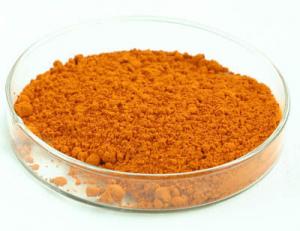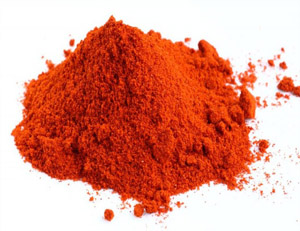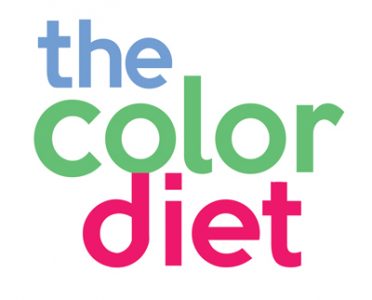Carotenoids are a class of more than 600 naturally occurring pigments synthesized by plants, algae, and photosynthetic bacteria. They give the characteristic coloration and brightness to many of our favorite fruits and vegetables such as carrots and oranges. While eating carrots is widely accepted–an scientifically proven–to be beneficial to our eyesight, it is interesting just how many compounds related to foods of the orange and yellow color groups share similar properties with shared health benefits. This actually makes perfect sense, as the pigmentation ranging from pale yellow through bright orange to deep red, is directly linked to the structure of their molecular bonds. While my approach to color comes more from the direction of aesthetic appreciation and interaction, I find it fascinating to imagine color in terms of molecular structure, the various frequencies of vibration occurring between molecules in nature all around us!
Beta Carotine

Beta Carotine is a cartenoid commonly found in orange and red colored fruits and vegetables such as carrots, tomatoes, and oranges. It is also a well-known antioxidant that helps preserve preserve our cellular structure. Antioxidants benefit the body by neutralizing and removing free radicals from the bloodstream. Not only does Beta Carotine provide a vital source of Vitamin A, it functions as a catalyst in the absorption of Vitamin E.
Lutein
Lutein’s name is literally derived from the word “yellow” in Latin, and is found in abundance in egg yolks, though it is not confined to foods that are yellow. In fact, a primary function of lutein is by performing very specific functions in the process of photosynthesis. Lutein is association directly with eye health, though it’s specific role is not fully understood. From Wikipedia:
Although lutein is concentrated in the macula, the small area of the retina responsible for three-color vision, the precise functional role of retinal lutein has not been determined.

Krill Oil Powder – A dietary supplement we are starting to see more widely on the natural foods market for its abundance of phospholipids and easily-absorbed Omega-3 fatty acids
is Krill Oil. Krill oil is derived from the Krill (Euphausia superba), a prawn-like crustacean with similar pigmentation to salmon. Krill is a primary food source for whales, and is one of the common sources of pigment used in fish farms to give salmon their bright red coloration. We certainly need to be conscientious of our friends in the ocean, realizing that we just might like the same foods as whales and dolphins, and be sure to be fair in the way we share these food sources.
Cartenoids with their bright colors are very well-known to humans for their health benefits as antioxidants, aids to macular (eyes) function, direct sources of essential fatty acids and Vitamins A and E, so it is no surprise we are preconditioned to pay special attention to foods in the color range of the oranges, reds and yellows. These colors are designed to have our full attention and are an exciting part of our food experience!
